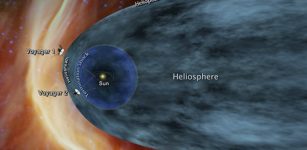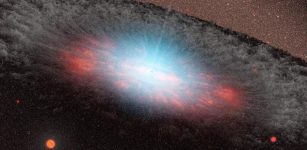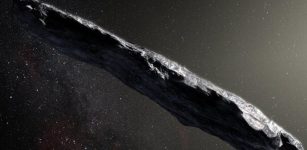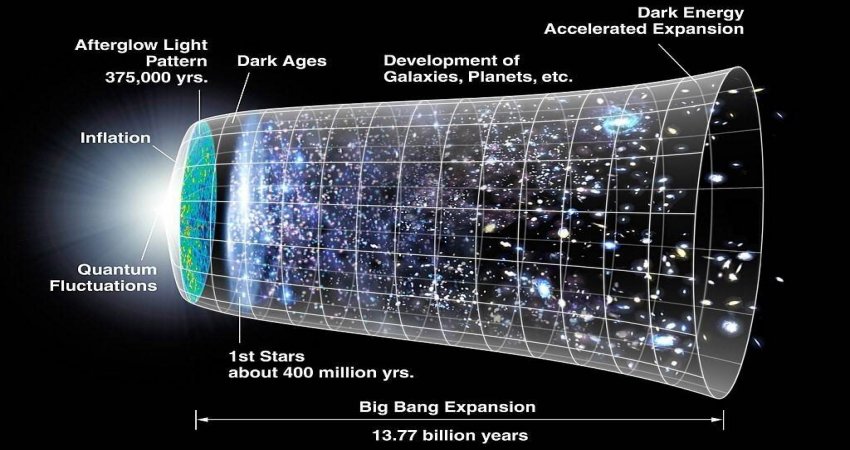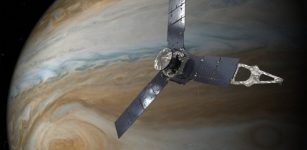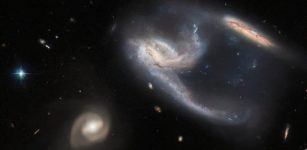Never-Before-Seen Objects Discovered Close To Supermassive Black Hole Sagittarius A
Eddie Gonzales Jr. – MessageToEagle.com – Astronomers report they have observed a class of bizarre objects close to the supermassive black hole Sagittarius A.
These bizarre, never-before-seen objects located at the center of our galaxy look like gas and behave like stars.
The new objects look compact most of the time and stretch out when their orbits bring them closest to the black hole. Their orbits range from about 100 to 1,000 years, said lead author Anna Ciurlo, a UCLA postdoctoral researcher.
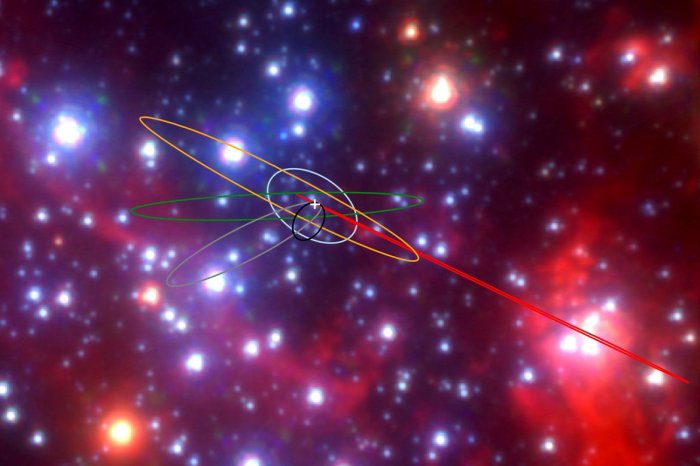
Image shows orbits of the G objects at the center of our galaxy, with the supermassive black hole indicated with a white cross. Stars, gas and dust are in the background. Credit: Anna Ciurlo, Tuan Do/UCLA Galactic Center Group
UCLA’s Andrea Ghez and her research team believe that G2 is most likely two stars that had been orbiting the black hole in tandem and merged into an extremely large star, cloaked in unusually thick gas and dust.
“At the time of closest approach, G2 had a really strange signature,” Ghez said.
“We had seen it before, but it didn’t look too peculiar until it got close to the black hole and became elongated, and much of its gas was torn apart.
It went from being a pretty innocuous object when it was far from the black hole to one that was really stretched out and distorted at its closest approach and lost its outer shell, and now it’s getting more compact again.”
“One of the things that has gotten everyone excited about the G objects is that the stuff that gets pulled off of them by tidal forces as they sweep by the central black hole must inevitably fall into the black hole,” said co-author Mark Morris, UCLA professor of physics and astronomy.
“When that happens, it might be able to produce an impressive fireworks show since the material eaten by the black hole will heat up and emit copious radiation before it disappears across the event horizon.”
But are G2 and G1 outliers, or are they part of a larger class of objects? In answer to that question, Ghez’s research group reports the existence of four more objects they are calling G3, G4, G5 and G6. The researchers have determined each of their orbits. While G1 and G2 have similar orbits, the four new objects have very different orbits.
Ghez believes all six objects were binary stars—a system of two stars orbiting each other—that merged because of the strong gravitational force of the supermassive black hole. The merging of two stars takes more than 1 million years to complete, Ghez said in a press statement.
See also:
August Explosion: Huge X-Ray Burst Detected In Constellation Sagittarius
Is It Possible That Alien Worlds Orbit A Supermassive Black Hole?
Parallel Universes May Be Hidden Inside Supermassive Black Holes
“Mergers of stars may be happening in the universe more often than we thought, and likely are quite common,” Ghez said.
“Black holes may be driving binary stars to merge. It’s possible that many of the stars we’ve been watching and not understanding may be the end product of mergers that are calm now.
We are learning how galaxies and black holes evolve. The way binary stars interact with each other and with the black hole is very different from how single stars interact with other single stars and with the black hole.”
Scientists noted that while the gas from G2’s outer shell got stretched dramatically, its dust inside the gas did not get stretched much.
“Something must have kept it compact and enabled it to survive its encounter with the black hole,” Ciurlo said. “This is evidence for a stellar object inside G2.”
The mergers of stars could feed the black hole.
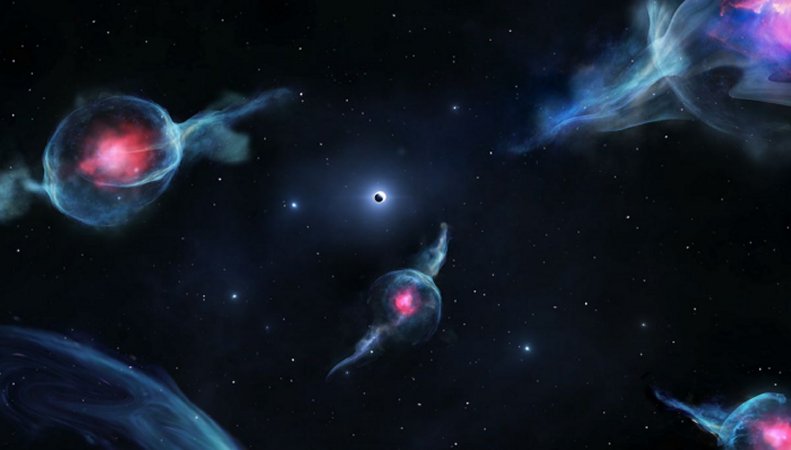
Artist’s impression of G objects, with the reddish centers, orbiting the supermassive black hole at the center of our galaxy. The black hole is represented as a dark sphere inside a white ring (above the middle of the rendering). Credit: Jack Ciurlo
The team has already identified a few other candidates that may be part of this new class of objects, and are continuing to analyze them.
Ghez noted the center of the Milky Way galaxy is an extreme environment, unlike our less hectic corner of the universe.
“The Earth is in the suburbs compared to the center of the galaxy, which is some 26,000 light-years away,” Ghez said.
“The center of our galaxy has a density of stars 1 billion times higher than our part of the galaxy. The gravitational pull is so much stronger. The magnetic fields are more extreme. The center of the galaxy is where extreme astrophysics occurs—the X-sports of astrophysics.”
Written by Eddie Gonzales Jr. – MessageToEagle.com Staff

